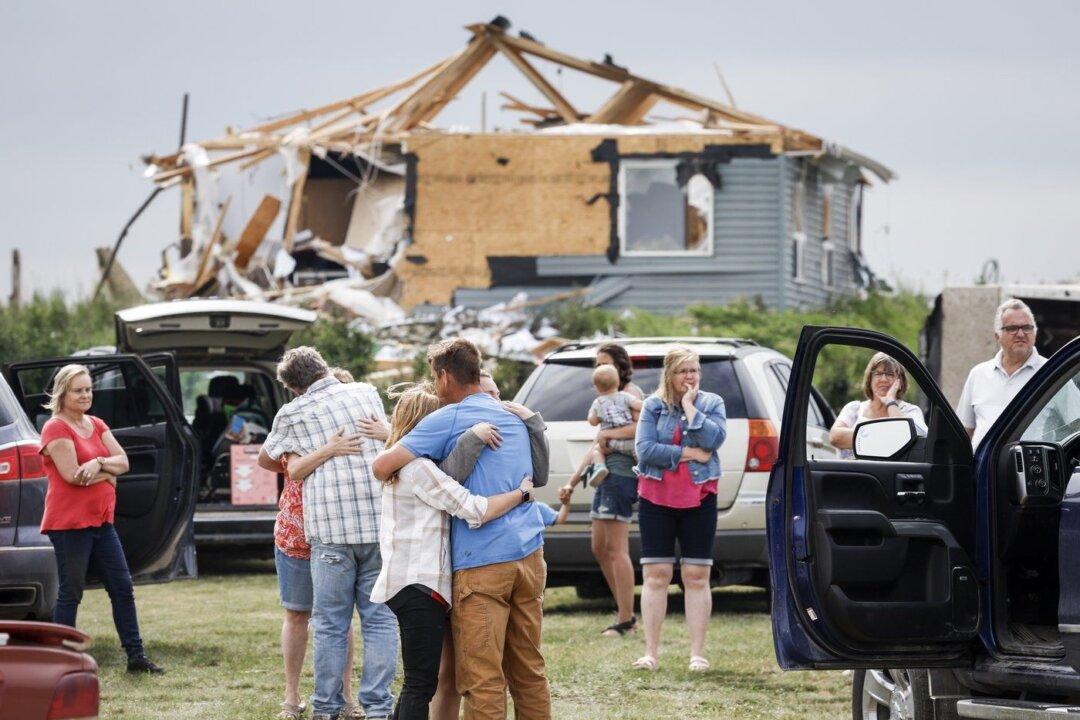The 275 km/hour tornado that left a path of destruction in Alberta’s Mountain View County on Canada Day has been declared by weather experts as the most powerful tornado to whip through the province in almost 40 years.
According to a preliminary assessment issued July 4 by Environment Canada, assisted by the Western University Northern Tornadoes Project (NTP), the tornado that ravaged 15 kilometres of land between Didsbury and Carstairs in just 30 minutes on July 1, was rated a EF4 on the six-point Enhanced Fujita scale—which starts at EF0 and goes to EF5.





